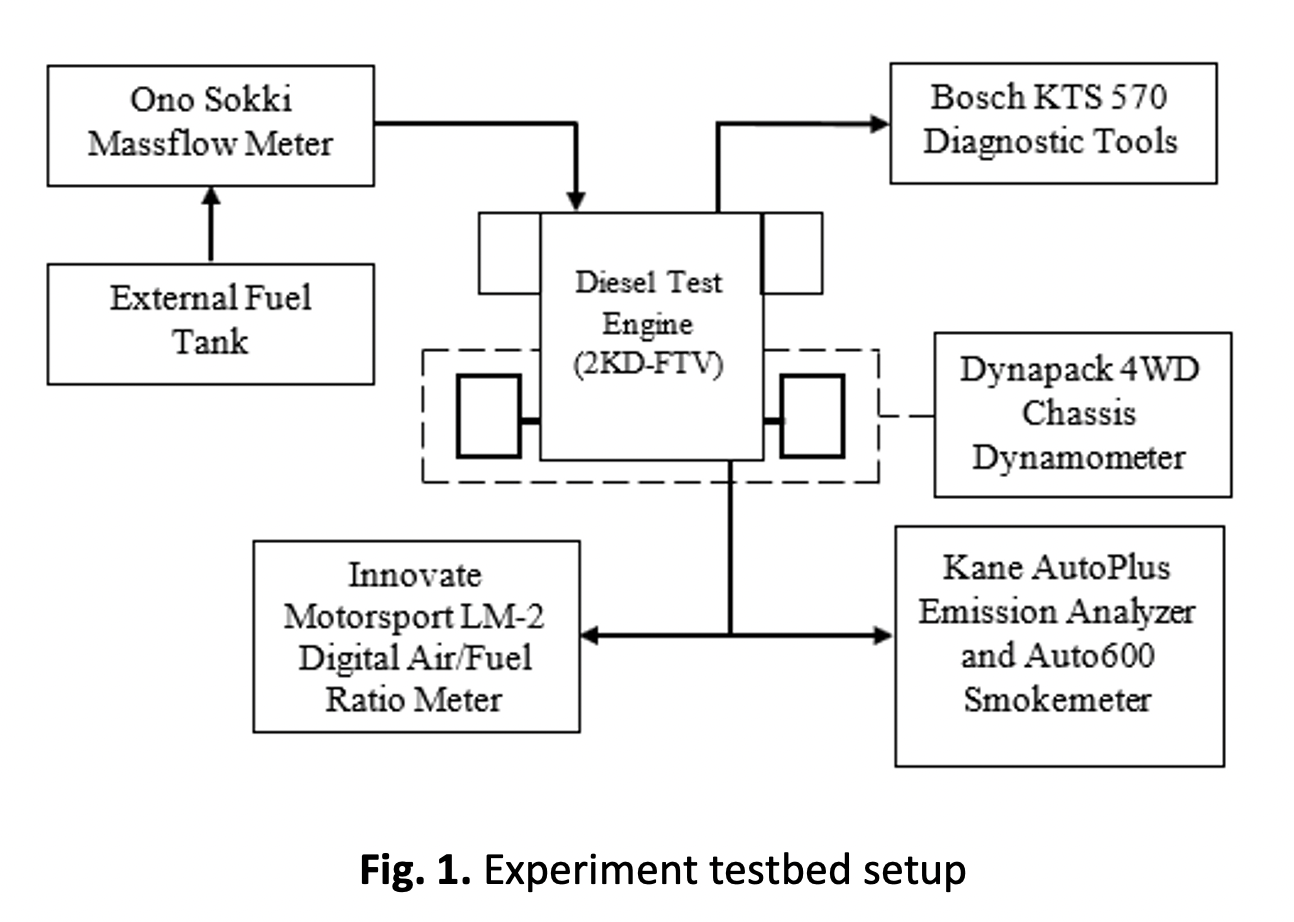Engine Performance and Exhaust Emission Effect of Increasing Euro5 Diesel Fuel Blended with 7% to 30% Palm Biodiesel
DOI:
https://doi.org/10.37934/araset.28.2.3440Keywords:
Biodiesel, engine performance, exhaust emissionAbstract
Biodiesel blend fuels have gained popularity over the year due to their ability to be used in conventional diesel engines without any modifications and have proven to be a cleaner fuel. The Malaysian National Automotive Policy (NAP) 2020 projects the usage of biodiesel blend B30 (30%) to be implemented by the year 2025 or earlier. Most manufacturers approve its usage but do not suggest using a higher blend than 20%. This paper focuses on the difference in engine performance and exhaust emissions between 7 % and 30% Euro 5 diesel-biodiesel blend. The fuels used are Euro 5 diesel fuel blend with 7% (B7) and 30% (B30) palm biodiesel. The fuel is tested on a Toyota Hilux model KUN 25 with a 2KD-FTV engine. Chassis dynamometer tests were conducted on a steady-state condition for speeds 30, 60, 90, and 110 km/h with accelerator pedal positions (APP) of 45% and 90% measuring its brake power, BSFC, and exhaust emissions of CO2, CO, and NOx. It was found that B30 produced slightly lower brake power than B7 and slightly higher BSFC than B7. Both CO2 and CO emissions for B30 are lower than B7, with a more significant difference at speed 30 km/h at all APP conditions. NOx emission for B30 is higher at speed 30 km/h but slightly lower at speed 60, 90, and 110 km/h than B7. Therefore, increasing Euro 5 biodiesel blend from 7% to 30% slightly lowers brake power, increases BSFC, lowers CO2 and CO emissions, and increases NOx emissions.
Downloads




























